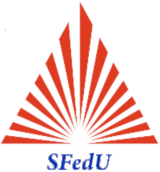Seguey Alexeevich Sinyutin
+7(863) 218-40-00
ext.
30119
+7(928) 157-99-65
officer
Institute of Radioengineering Systems and Control
Head of the department
Institute of Radioengineering Systems and Control
Senior researcher
Academy for Engineering and Technologies

Research interests:
Methods and means of processing and analyzing electrophysiological signals, and muscle activity and mechanical signals (biodynamics and biokinematics), information from electrochemical sensors.
Structural analysis of electrophysiological signals.
Development of wireless polygraphs, both working in real time, and with recording to a non-volatile medium.
Development of hybrid navigation systems, circuit and algorithmic solutions.
Development of algorithmic bases for data processing in intelligent sensors, circuitry and design solutions for intelligent sensors.
Research projects:
"The development and realization of high-tech manufacturing of the indigenous Russian innovative digital X-ray complex capable of tomographic image synthesis", pursuant to governmental decree of the Russian Federation N 218 N 03.G25.31.0225 issued on April 09, 2010. (contract No 070-10/2016 dated 07.10.2016г (realisation period 2017-2019)
Comprehensive project on the Governmental Decree 218 No. 02.G25.31.0171 (contract No 71/66 042-15 dd. 29.07.2015) "Development and creation of high-tech production of an innovative system for integrated accounting, recording and analysis of energy consumption and water consumption by industrial enterprises and objects of housing and communal services » (realisation period 2016 – 2018)
Membership in the research and development project No. 5-N / 2016 dated August 26, 2016: Development of principles for architecture stratedy, operating system and Astok (automated system of maintenance and control) programming system for a wide range of military hardware (weapons, military and special equipment)
Teaching:
-
Real time operation systems
The course considers the tasks solved by real-time operating systems (RTOS), particularly the features of task performing at a real-time pace. Specific mechanisms for interacting with RTOS services are demonstrated, providing examples of programming tasks for running under RTOS for microcontrollers AVR and ARM. Recommendations are given on the choice of RTOS and the programming system, taking into account the specifics of the task and the hardware platform on which the task is planned. The questions of interaction with real equipment connected to the hardware platform are discussed in sufficient detail.



